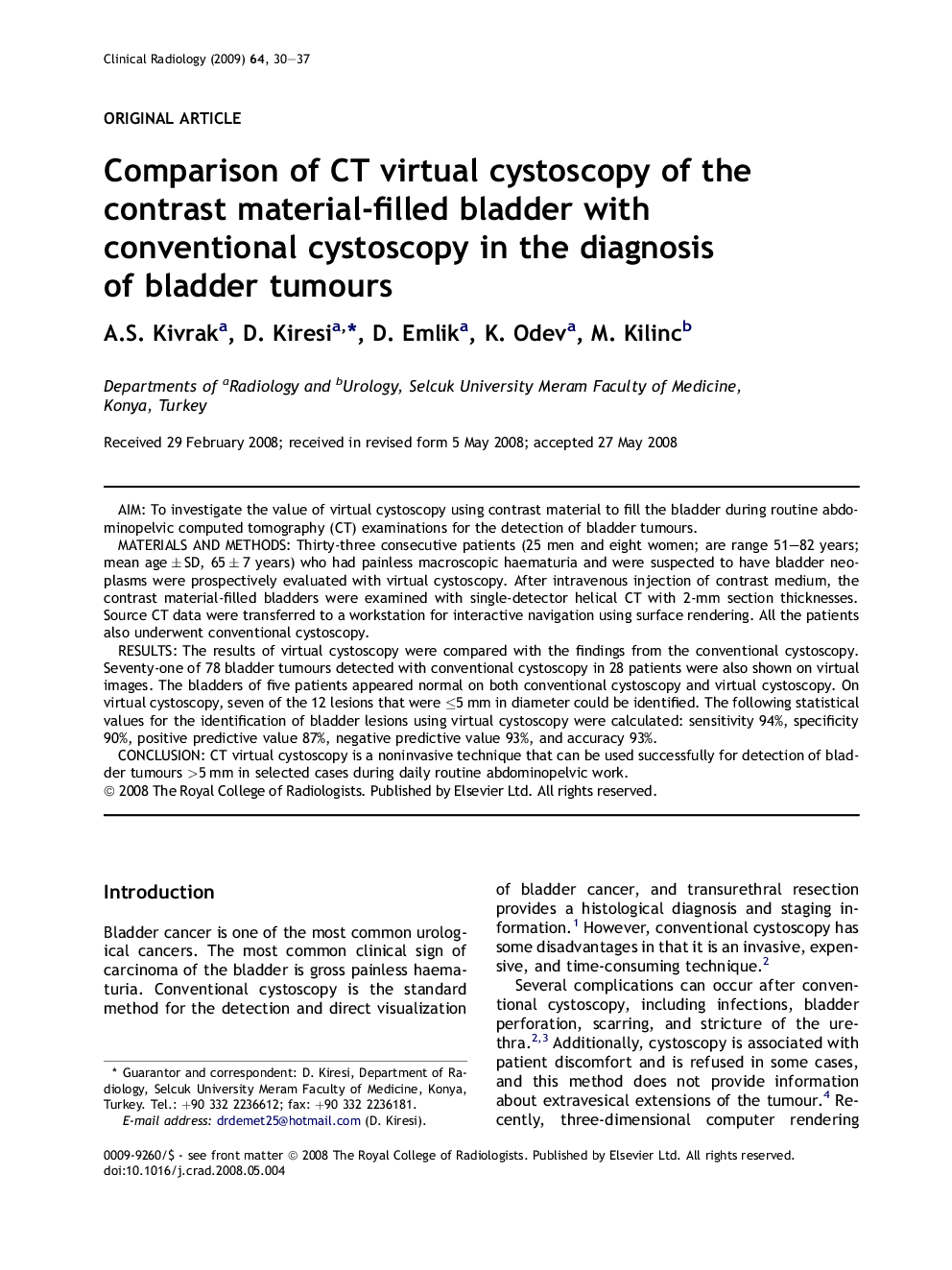| Article ID | Journal | Published Year | Pages | File Type |
|---|---|---|---|---|
| 3984244 | Clinical Radiology | 2009 | 8 Pages |
AimTo investigate the value of virtual cystoscopy using contrast material to fill the bladder during routine abdominopelvic computed tomography (CT) examinations for the detection of bladder tumours.Materials and methodsThirty-three consecutive patients (25 men and eight women; are range 51–82 years; mean age ± SD, 65 ± 7 years) who had painless macroscopic haematuria and were suspected to have bladder neoplasms were prospectively evaluated with virtual cystoscopy. After intravenous injection of contrast medium, the contrast material-filled bladders were examined with single-detector helical CT with 2-mm section thicknesses. Source CT data were transferred to a workstation for interactive navigation using surface rendering. All the patients also underwent conventional cystoscopy.ResultsThe results of virtual cystoscopy were compared with the findings from the conventional cystoscopy. Seventy-one of 78 bladder tumours detected with conventional cystoscopy in 28 patients were also shown on virtual images. The bladders of five patients appeared normal on both conventional cystoscopy and virtual cystoscopy. On virtual cystoscopy, seven of the 12 lesions that were ≤5 mm in diameter could be identified. The following statistical values for the identification of bladder lesions using virtual cystoscopy were calculated: sensitivity 94%, specificity 90%, positive predictive value 87%, negative predictive value 93%, and accuracy 93%.ConclusionCT virtual cystoscopy is a noninvasive technique that can be used successfully for detection of bladder tumours >5 mm in selected cases during daily routine abdominopelvic work.
